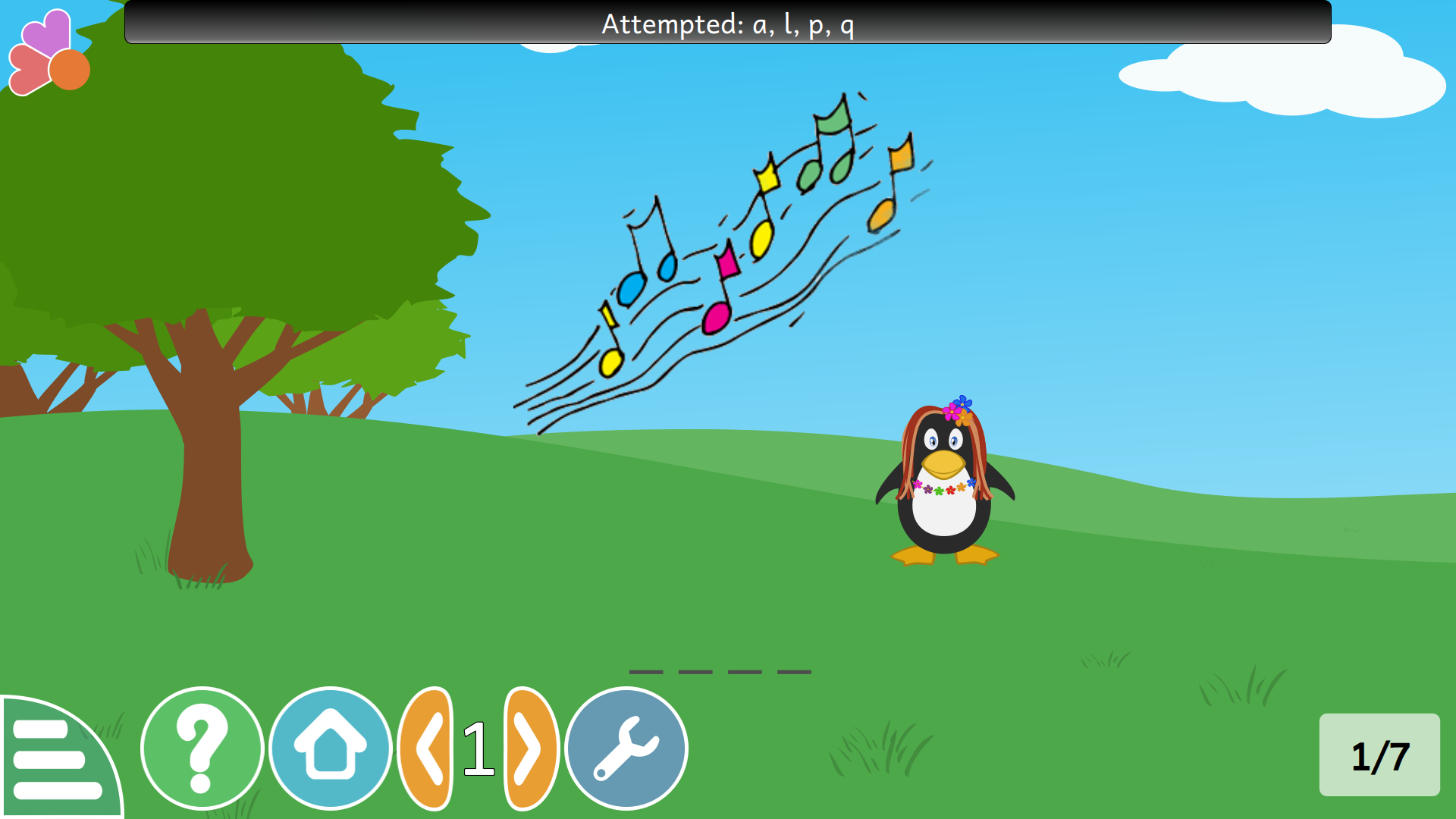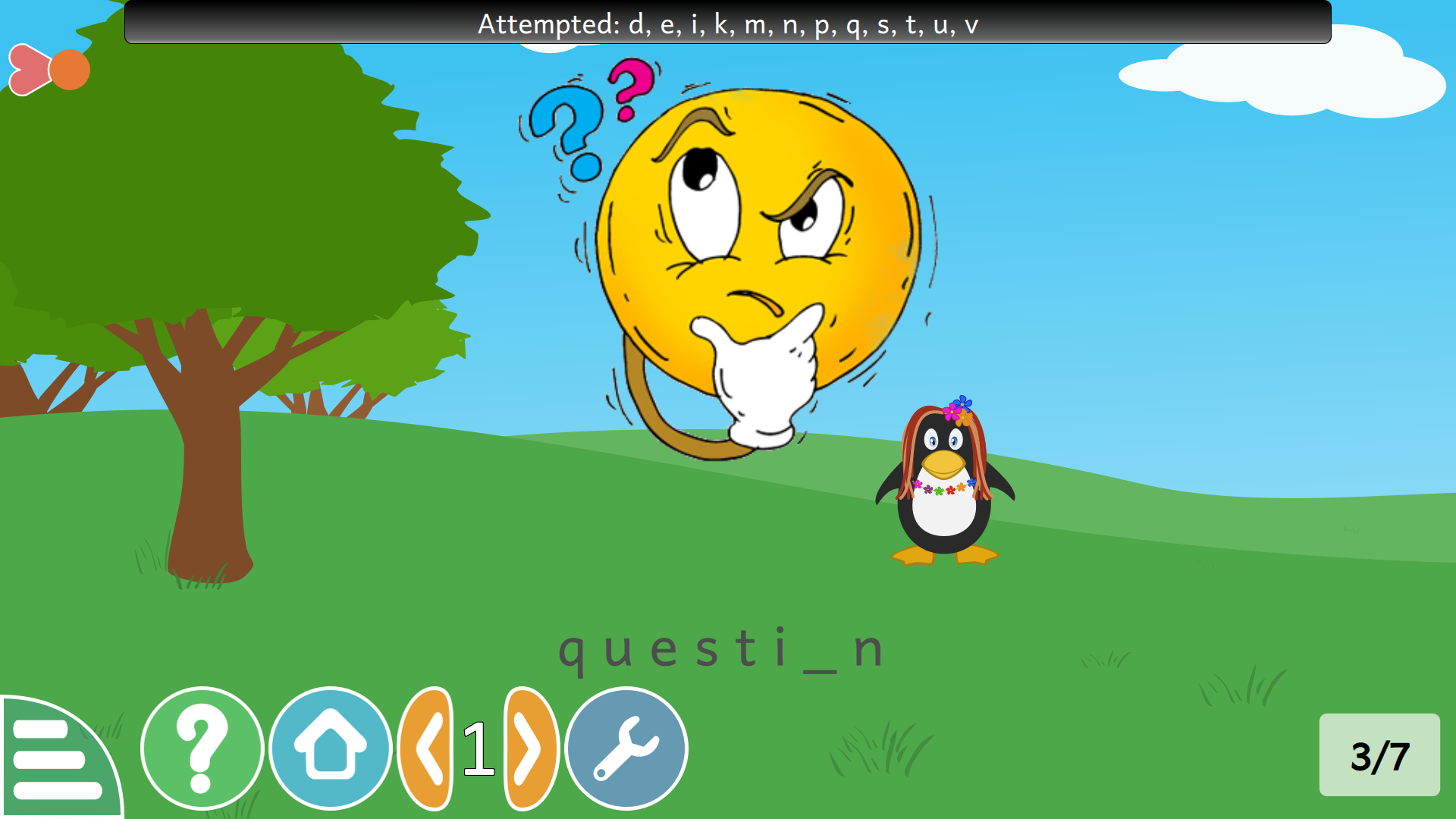
Hangman - Attempted Characters
First merge always feels good! I was working on adding this feature for the last few days, and it is done finally.
Task
To add a Textfield to display the characters which were attempted by the user in the Hangman activity.

Explanation
Hangman.qml
GCText {
id: guessedText
fontSize: smallSize
color: "#FFFFFF"
wrapMode: Text.WordWrap
horizontalAlignment: Text.AlignHCenter
width: parent.width - 2*clock.width
anchors {
horizontalCenter: parent.horizontalCenter
}
z: 12
}
The textfield which displays the characters which are attempted by the user. The color of the text is white ( #FFFFFF ), and the width is width of the screen - 2*(width of the clock) to avoid the text and the clock to get overlapped.
Rectangle {
width: guessedText.width
height: guessedText.height
radius: 10
border.width: 1
gradient: Gradient {
GradientStop { position: 0.0; color: "#000" }
GradientStop { position: 0.9; color: "#666" }
GradientStop { position: 1.0; color: "#AAA" }
}
anchors {
horizontalCenter: parent.horizontalCenter
}
z: 11
}
This is the Rectangle that will be under the text. A gradient is given to this Rectangle from black (top ) to a lighter color (bottom).
Also, we need to make sure that the hint image doesn’t get overlapped with the text. For that, we change the width of the imageframe to:
Item {
id: imageframe
width: Math.min(300 * ApplicationInfo.ratio,
background.width * 0.8,
hidden.y) - guessedText.height
Hangman.js
In the javascript file, we create the logic to generate the text in the following way:
function createAttemptedText() {
alreadyTypedLetters.sort()
items.guessedText.text = qsTr("Attempted: %1").arg(alreadyTypedLetters.join(", "))
}
alreadyTypedLetters is an array that stores the characters that are typed by the user. We are using qsTr() to enable translation for the given text to various other languages.
To make it work, we call createAttemptedText() from:
initSubLevel()function, right after declaringalreadyTypedLettersarray. At this point, the array will be empty, so we will have only the header in the text field.processKeyPress(text)function, write after the newly typed character is pushed into the alreadyTypedLetters array. Thus, whenever a new charater is typed by the user,createAttemptedText()will be called.

Let me know what you think of this article on twitter @RudraNilBasu or leave a comment below!